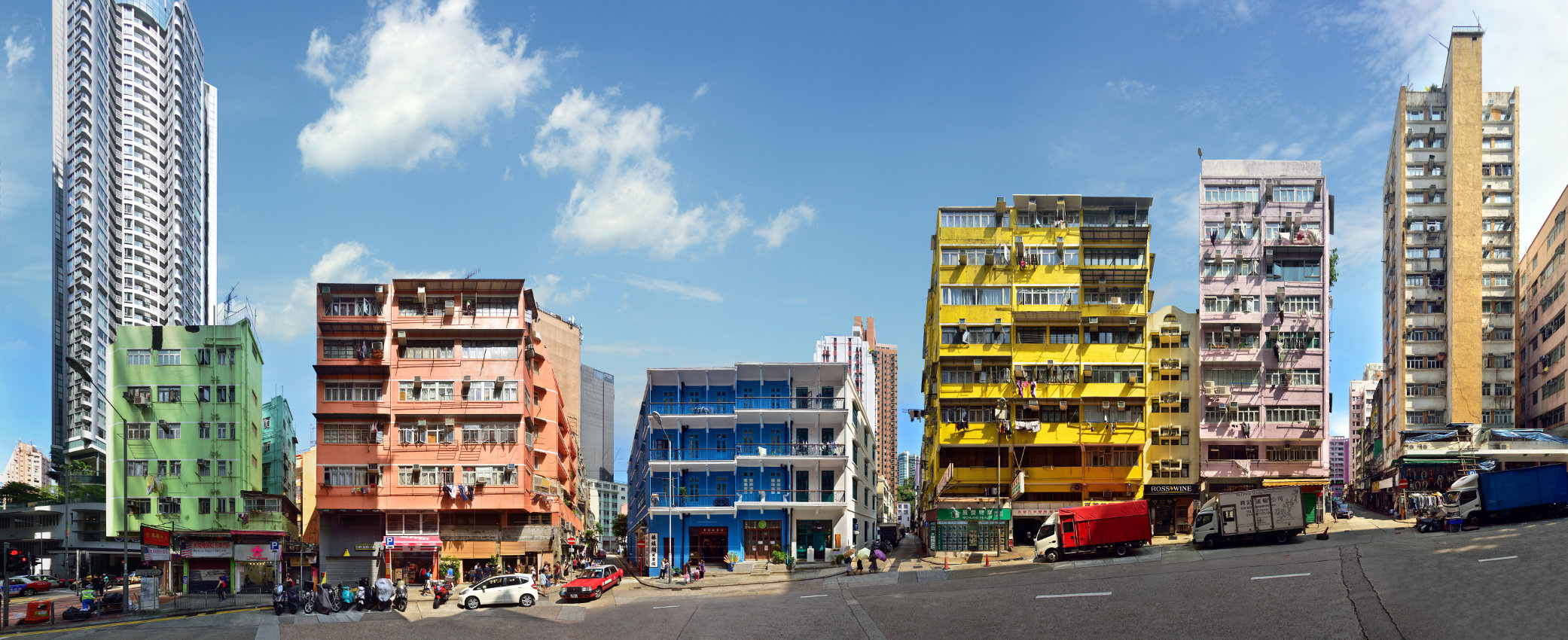History of the Blue House in Hong Kong
The famous Blue House (藍屋) cluster of buildings, located on Stone Nullah Lane in Wan Chai, is a prime example of pre-war tong lau architecture, and a case-study in successful heritage conservation. Once the site of a Chinese hospital, then a temple devoted to the God of Medicine, the tenement buildings now situated at 72-74 Stone Nullah Lane were built between 1922 and 1927. These Chinese shophouses were constructed with timber and bricks, featuring cantilevered balconies and wooden French doors. They once housed local shops on the street level, including a grocery store, a wine merchant and a Chinese bonesetter; while the upper 3 floors accommodated scores of local residents in around 20 subdivided apartments. While the exterior was originally painted white, when the government decided to redecorate the block in 1997, they used leftover paint from the Water Supplies Department, which is how the Blue House got its name. At that time, the section at number 74A was privately-owned and still painted white, so it was decided it should remain that colour until the present day.
Example of Cultural Heritage Conservation
A grassroots campaign was successful in preventing the demolition of the Blue House structure, although the shops and apartments were in much need of upgrading. In 2013, the government began to revitalise the Blue House, together with neighbouring tenements known as the Yellow House and the Orange House. All of the Blue House’s historical features would be preserved, including patterned floor tiles, and ornate iron railings, but each of the apartments would be modified to include bathrooms, kitchens and air-conditioning. At that time, most residents had lived inside the cluster for over half a century; the only pre-war shophouse to retain a comprehensive social network. Local activists were able to persuade the government to allow the original residents of the site to move back into the accommodation once the renovations had been completed, with subsidised rents. The revitalisation project was completed in 2017 and now houses several family units who had been long-term residents of the site previously, as well as several restaurants run by social enterprises, and a community centre dedicated to recording and exhibiting Hong Kong stories. In 2017, the restoration was the first Hong Kong-based project to receive the Award of Excellence in UNESCO’s Awards for Cultural Heritage Conservation. The jury noted how the Blue House Cluster “has safeguarded not only the architecture, but also the living history and culture of a neighbourhood.”


